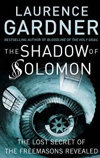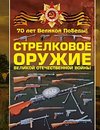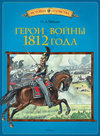
Gardens in Russia
Source: Wikipedia. Pages: 35. Chapters: Botanical gardens in Russia, Parks and gardens in Moscow, Parks and open spaces in Saint Petersburg, Pavlovsk, Saint Petersburg, Izmaylovo Estate, Peterhof Palace, Petergof, Kuskovo, Botanic Garden of the Irkutsk State... Viac o knihe
Produkt je dočasne nedostupný
14.70 €
bežná cena: 16.70 €
O knihe
Source: Wikipedia. Pages: 35. Chapters: Botanical gardens in Russia, Parks and gardens in Moscow, Parks and open spaces in Saint Petersburg, Pavlovsk, Saint Petersburg, Izmaylovo Estate, Peterhof Palace, Petergof, Kuskovo, Botanic Garden of the Irkutsk State University, Khimki Forest, Tsarskoye Selo, Manezhnaya Square, Moscow, Field of Mars, Losiny Ostrov National Park, Vlakhernskoye-Kuzminki, Gorky Park, Historic Centre of Saint Petersburg and Related Groups of Monuments, Patriarch Ponds, Poklonnaya Hill, Summer Garden, Saint Petersburg Botanical Garden, Catherinehof, Tsaritsino park, Fallen Monument Park, Moskovsky Victory Park, Sokolniki Park, Alexander Garden, Moscow Botanical Garden of Academy of Sciences, Clean Ponds, Maritime Victory Park, Bitsa Park, Izmaylovsky Park, Lebedyansky Ponds, Neskuchny Garden, Alexander Park, Serebryannyi Bor. Excerpt: Pavlovsk (Russian: ) is a Russian town under the jurisdiction of Saint Petersburg. It is located 30 kilometers (19 mi) south from St. Petersburg and about 4 km southeast from Pushkin. The town developed around the Pavlovsk Palace, a major residence of the Russian imperial family. Between 1918 and 1944 its official name was Slutsk, after the revolutionary Vera Slutskaya, and then was changed back to Pavlovsk. Pavlovsk is part of the UNESCO World Heritage Site Saint Petersburg and Related Groups of Monuments. Bip fortress in the early 19th centuryA wooden fortress was built by Russians on the place of Pavlovsk and was known from at least 13th century as part of an Administrative division of Novgorod Land. The fortress and the entire region were later captured by the Swedes. On 13 August 1702, the Russian army led by Peter the Great and Fyodor Apraksin met Swedes at the Izhora River and pushed them to the fortress. For several days, the Swedish Army was reinforcing their positions but were expelled upon a surprise frontal attack. Paul I, an avid fan of military, had long dreamed of building a stone fortress on the ruins of the Swedish forts. After he became an Emperor, in 1796, he hired the Italian architect Vincenzo Brenna and raised money for the project. By 1798 Brenna raised a Gothic folly, Bip fortress, which fascinated Paul so much that he listed it on the Army register of real fortresses. After the death of Catherine, Paul and Brenna expanded the Pavlovsk estate with real military barracks, officers' quarters and a hospital. View of the palace and park in 1808 Monument of Paul I in front of the Pavlovsk PalaceCatherine II liked the nature in Pavlovsk area and frequently visited it for hunting trips. In December 1777, she assigned to her son, Paul I, 362 desyatinas (977 acres; 395 ha) of land along the Slavyanka River, together with forests, arable land and two small villages with peasants. This was a present to Paul and his wife Maria Feodorovna on the occasion
- Vydavateľstvo: Books LLC, Reference Series
- Formát: Paperback
- Jazyk:
- ISBN: 9781156080238


 Anglický jazyk
Anglický jazyk 



 Ruský jazyk
Ruský jazyk 





